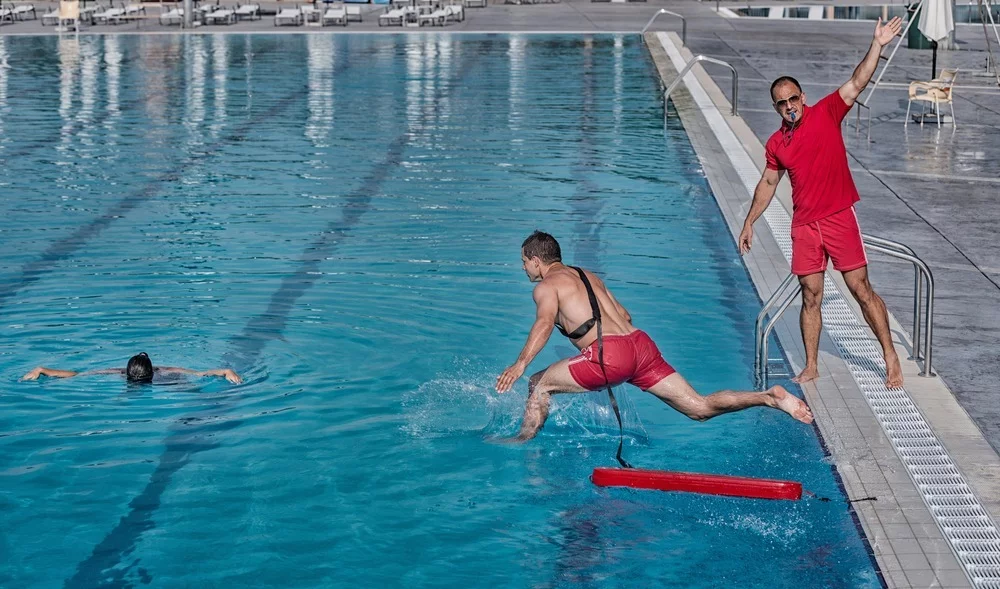The Shocking Truth About Lifeguard Class
Lifeguarding seems like an easy summer job – you get paid to sit and watch people have fun at the beach or pool all day, right? While lifeguards do ensure safety, what many don’t realize is that obtaining lifeguard certification is no small feat. Lifeguard classes are typically much more physically and mentally rigorous than most trainees expect. Here are some of the shocking truths about what it takes to pass lifeguard class.
The Ultimate Truth About Lifeguard Class

Extensive Swim Tests
One of the first obstacles lifeguard trainees face is swim testing. To be qualified for water rescue, lifeguards must be strong swimmers. The swimming portion of certification involves timed swim tests that assess endurance as well as basic strokes.
For example, the American Lifeguard swim test requires 500 yards of continuous swimming using three different strokes (front crawl, breaststroke, elementary backstroke), treading water for 2 minutes without using your hands, and performing a swimming rescue while wearing a lifejacket. Failure to complete these events in the allotted time means you don’t pass the swim test and cannot continue with lifeguard class.
Strenuous Physical Fitness
In addition to swimming ability, lifeguard certification demands a high level of physical fitness. Stamina is key, as lifeguards must be prepared to perform physical rescues involving dragging or carrying a fully grown person out of the water.
Lifeguard classes incorporate physical training routines like sprinting in and out of the water while wearing a lifejacket and sandbag, performing CPR on mannequins for extended periods without tiring, and practicing spinal injury rescue exercises that require lifting and stabilizing heavy victims. The physical demands of the job are no joke – lifeguard trainees push their limits in fitness prep for real water emergencies.
Rigorous First Aid and CPR Certification
Another major component of lifeguard classes is first aid and CPR training. Lifeguards are expected to act swiftly and correctly in any medical emergency like assisting someone having a heart attack or allergic reaction. CPR certification alone involves learning multiple rescuer techniques, AED use, infant/child CPR, and demonstrating proficiency through timed testing.
Lifeguard trainees spend hours memorizing first-aid protocols and practicing lifesaving skills until they can respond appropriately under pressure. One small mistake during skills testing means not obtaining the critical medical certifications required to lifeguard.
Stressful Scenario Training
Toward the end of lifeguard training, scenarios are used to test trainees’ judgment and ability to respond effectively in emergencies. Complicated water rescue simulations put reaction time, prioritization skills, and leadership to the test.
Trainees face stressful mock emergencies like rescuing multiple victims at once or responding to a spinal injury in rough surf while communicating with EMS. Scenario testing pushes lifeguards to perform under pressure so they are prepared to handle real-life crises confidently. Making the right call in a timed simulation could mean the difference between certification and having to retake the class.
High Failure Rate
What many don’t expect is that most lifeguard certification classes have failure rates between 30-50% according to the American Lifeguard Association. The intensive physical demands, necessary medical skills, and scenario performance evaluations mean not all trainees will pass on the first try. Repeating a class comes at a considerable time and financial cost for those who don’t meet the rigorous requirements initially. Lifeguarding is a safety profession that depends on certification – which is why passing lifeguard class involves mastering skills that even surprise seasoned swimmers.
Also Read: How To Write Bibliography
Final Opinion
While lifeguarding appears like a glamorous summer job on the surface. The physical training, medical certification, and performance tests required behind the scenes are no cakewalk. Lifeguard class pushes trainees to their limits with swim tests, fitness drills, advanced first aid/CPR, and pressure simulations.
Now you have insight into why lifeguard certification is taken seriously and has high failure rates. Because those who pass are truly prepared to perform water rescues quickly and correctly when it counts to save lives. If you have what it takes physically and mentally, lifeguarding through American Lifeguard Events can be a very rewarding career.

















